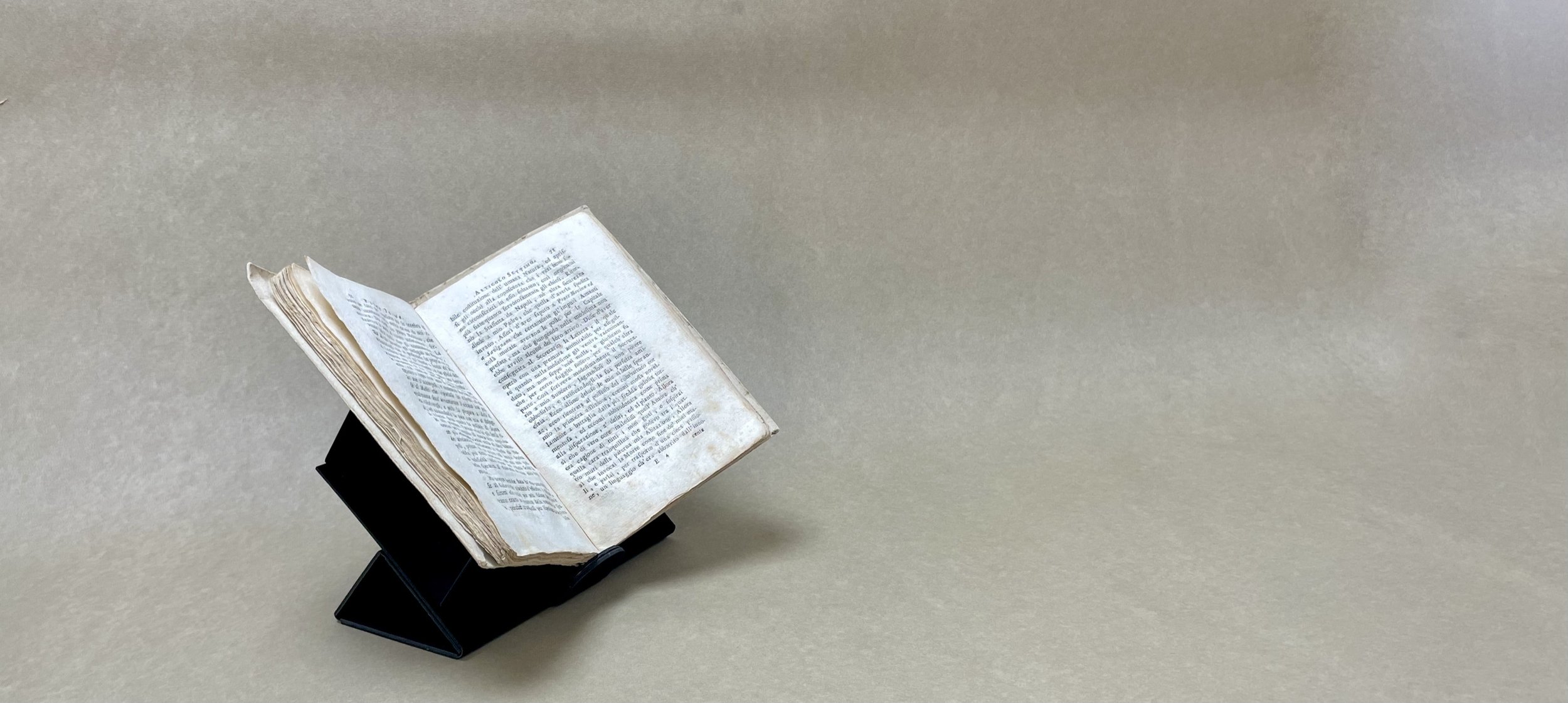
Focus on Preservation
Preservation-focused Design
Our product designs reflect careful consideration of the essential factors for safe, sustainable use, exhibition practices, and design requirements of rare and precious books.
With a practical focus on real-world contexts, they strike a balance between preservation and display—enabling bound volumes to be protected while allowing their beauty and significance to be fully appreciated.
-
With a collapsible, lightweight design, it stores flat and is always ready when you need it—whether at your desk, in a reading room, or packed for the next book fair or pop-up exhibition.
-
Minimal weight and volume make the Cradle easy to carry alongside your laptop or ship flat with your books. It’s the perfect companion for book research trips and traveling exhibitions.
-
Reduce unnecessary handling of delicate materials by moving the Cradle instead of the book—an especially valuable feature during round-table reviews or collaborative showings.
-
Available in a variety of opening angles, our Cradles let you choose the safest, most supportive configuration for the book at hand. Our angle choices conform to museum and library standards for safe display and access.
-
Built to last—just like the books they protect—our Cradles offer a durable, sustainable solution to the challenge of book support. Easy to store, retrieve, reuse, and transport, they won’t collect dust in the corner of the storage room.
It may seem like a small detail, but we believe thoughtful, practical design like this plays a meaningful role in helping cultural heritage institutions achieve their sustainability goals now and into the future.
Context Matters
-
Our cradles are considered fit for purpose for short-term displays, typically lasting up to 3 or 4 months. This aligns with best practices for managing light exposure through cycles of display and storage.
These short-term display cycles also account for the physical strain placed on a book’s spine during exhibition.
-
Our products are composite objects which allows them to be versatile. As such, we recommend using them in an area with adequate ventilation.
For archival-quality support, we recommend using single-material solutions that meet archival standards.
-
We use a conservation-grade adhesive with the lowest measured levels of acetic acid off-gassing and diminishing levels of VOCs from dried adhesives over time. To ensure safety, all our products should air out in a well-ventilated space for 30 days before being used with heritage objects.
-
We may change or adapt our products as we continue to learn about and research (new) materials and designs. Please don’t hesitate to get in touch if you have any questions, or would like to find out more about the preservation-quality of our products.
-
Our material and design choices have been made with reference to recent guidelines for display and handling of books set out by Canadian Conservation Institute (CCI), American Institute for Conservation (AIC) and Northeast Document Conservation Center (NEDCC).
At STILT, preservation means minimizing risks across different settings while maximizing enjoyment and interaction with our book heritage.


